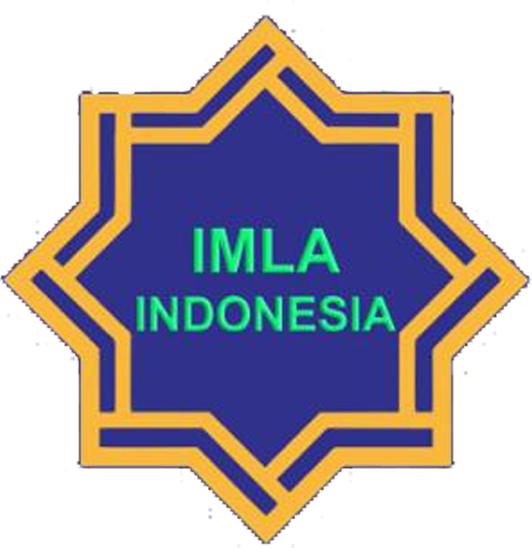Effectiveness of Basic Imla' Rules in Improving Arabic Writing Skills of Grade 7 Students of MTsN 1 Malang City
Keywords:
Arabic, Imla', WritingAbstract
This research aims to review the effectiveness of applying basic imla' rules in improving Arabic writing skills of 7th grade students of MTsN 1 Malang City. The method is quasi-experiment with one organization pretest-posttest layout. The research began with a pretest to measure students' initial abilities, followed by giving treatment in the form of teaching basic imla' rules, and ended with a posttest to evaluate learning outcomes. The results showed an increase in students' writing ability after being given treatment. The average pretest score of 77 increased to 88 in the posttest. Statistical analysis with t-test shows that the t-count value of 7.11 is greater than the t-table of 2.06 at the 0.05 significance level. This indicates the effectiveness of the application of basic imla' rules to improving students' Arabic writing skills by findings significant differences in the results of student writing before and after treatment is given. It is hoped that the results of this research can be a consideration for Arabic educators to give more attention the important role of imla' rules in Arabic learning and practice it regularly in order to improve students' Arabic writing skills earlier.
References
Anugrahi, N. (2016). Efektivitas Pembelajaran Imla’ dalam Meningkatkan Kemampuan Menulis Kata dalam Bahasa Arab Peserta Didik Kelas XI Madrasah Aliyah DDI Kaballangan Kab. Pinrang. July, 1–23.
Arikunto, S. (2006). Prosedur Penelitian Suatu Pendekatan Praktik. Rineka Cipta.
Asrofi, I., & Halim, A. (2021). Efektivitas Metode Imla’ terhadap Peningkatan Kemampuan Siswa dalam Menulis Bahasa Arab. EL-IBTIKAR: Jurnal Pendidikan Bahasa Arab, 10(2), 113. https://doi.org/10.24235/ibtikar.v10i2.9304
Hastjarjo, T. D. (2019). Rancangan Eksperimen-Kuasi. Buletin Psikologi, 27(2), 187. https://doi.org/10.22146/buletinpsikologi.38619
Jafar, A. F. (2021). Penerapan Metode Pembelajaran Konvensional Terhadap Hasil Belajar Fisika Peserta Didik. Al Asma : Journal of Islamic Education, 3(2), 190. https://doi.org/10.24252/asma.v3i2.23748
Kesuma, G. C., & Fauziyah, A. (2016). Penerapan Metode Imlâ’ Untukmeningkatkanketerampilan Menulis Bahasa Arab Peserta Didik Kelas X Sma It Pondok Pesantren Al-Mujtama’Al-Islamikarang Anyar Lampung Selatan. Jurnal Al Bayan: Jurnal Jurusan Pendidikan Bahasa Arab, 8(2). https://doi.org/10.24042/albayan.v8i2.363
Nisa, N. K., & Rizki, M. T. (2021). Integrasi Kaidah Imla’ Dan Tajwid Dalam Kemampuan Menulis Bahasa Arab. Al-Mu’Arrib: Journal of Arabic Education, 1(2), 49–57. https://doi.org/10.32923/al-muarrib.v1i2.2068
Peranginangin, A., Barus, H., & Gulo, R. (2020). Perbedaan Hasil Belajar Siswa Yang Di Ajar Dengan Model Pembelajaran Elaborasi Dengan Model Pembelajaran Konvensional. Jurnal Penelitian Fisikawan, 3(1), 43–50. http://jurnal.darmaagung.ac.id/index.php/jurnalpenelitianfisikawan/article/view/452/436
Prastyo, M. A. N., & Kholisin. (2023). Penerapan Metode Imla’ al-mandzur dan Imla’ al-istima’i untuk Meningkatkan Kemampuan Menulis Kosa Kata Bahasa Arab Siswa Kelas 7. JoLLA: Journal of Language, Literature, and Arts, 75–87. https://doi.org/DOI: 10.17977/um064v3i12023p75-87
Rathomi, A. (2019). Imla’ Manzhur Dalam Pembelajaran Bahasa Arab Pada Siswa Sekolah Dasar. Jurnal Primearly, II(1), 1–7.
Sudjana. (2005). Penilaian Hasil Proses Belajar Mengajar. PT Remaja Rosdakarya.
Susanti, S. (2020). Efektivitas Metode Imla’ Manzur dalam Meningkatkan Keterampilan Menulis Bahasa Arab Siswa Madrasah Tsanawiyah. Aphorisme: Journal of Arabic Language, Literature, and Education, 1(2), 1–22. https://doi.org/10.37680/aphorisme.v1i2.439







